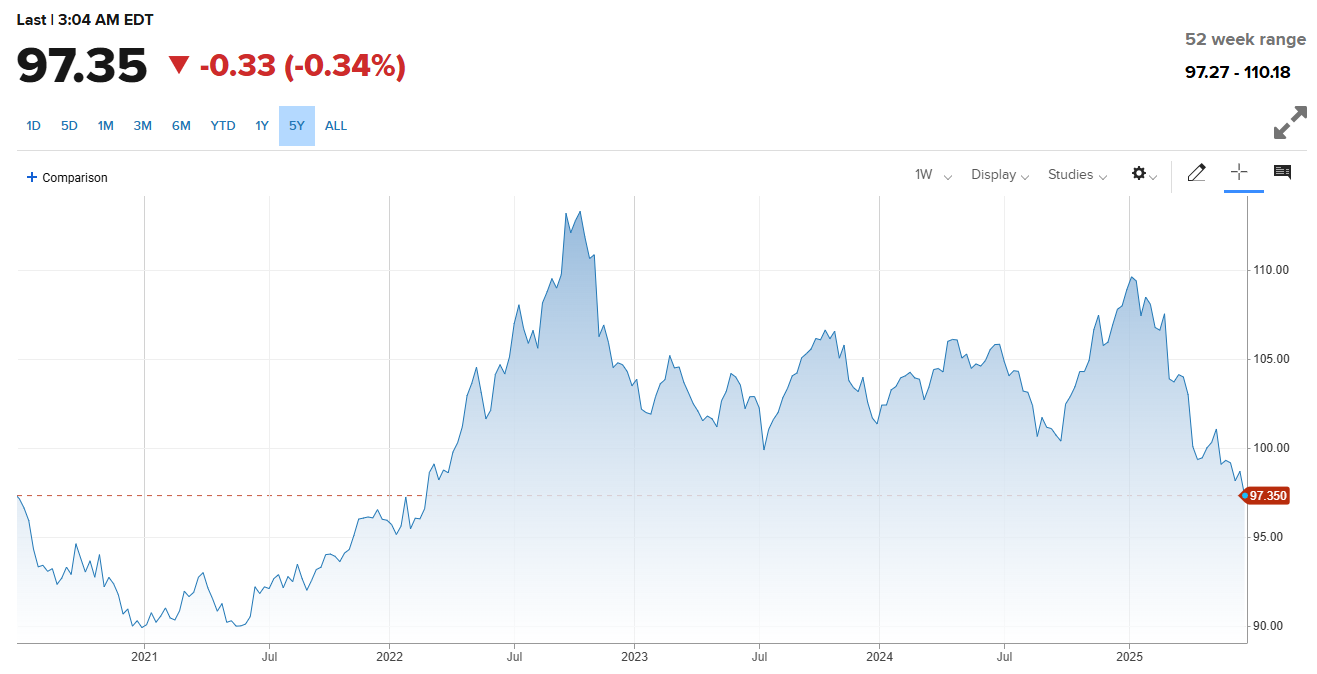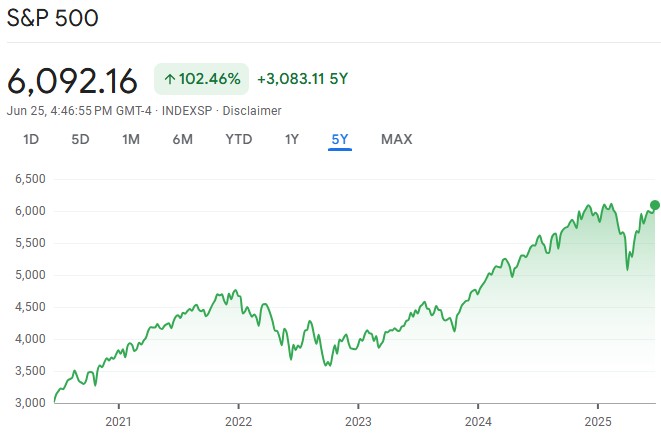The US dollar continued its downward slide on Thursday, 26 June 2025, with the Dollar Index (DXY) falling to 97.50—a level not seen since early 2022. This marks a 3.5-year low for the greenback, reflecting ongoing shifts in global risk appetite, rising expectations for US interest rate cuts, and growing uncertainty about the Federal Reserve's independence.
DXY Hits Lowest Level Since Early 2022

According to the latest data, the DXY slipped to 97.4929 in Thursday's session, down 0.01% from the previous day. Over the past month, the dollar has weakened by 2.04%, and it is now down 7.93% over the last twelve months. The DXY last traded at these levels in March 2022, underscoring the scale of the recent decline.
Drivers Behind the Dollar's Weakness
Fed Rate Cut Bets Intensify
Market expectations for a Federal Reserve rate cut at the July meeting have risen sharply. The probability of a cut now stands at 25%, up from just 12% a week ago. Traders are also pricing in around 64 basis points of cuts by the end of 2025, compared to only 46 basis points forecast last Friday. This shift is largely driven by cooling US inflation and cautious signals from Fed officials, who have emphasised the need to monitor the impact of tariffs and other policy moves on price stability.
Concerns Over fed independence
Political developments have also weighed on the dollar. Reports that President Trump may seek to replace Federal Reserve Chair Jerome Powell before the end of his term have fuelled market anxiety about the central bank's future autonomy. Trump's public criticism of Powell for not cutting rates more aggressively, combined with speculation over a possible successor, has undermined confidence in the US monetary policy framework.
As Kieran Williams of InTouch Capital Markets noted, “Markets are likely to react negatively to any premature announcement regarding Powell's successor, especially if the choice seems politically driven. Such a move could raise concerns about the potential compromise of Fed independence and might diminish its credibility. If this occurs, it could reshape rate expectations, prompting a reevaluation of dollar positioning.”
Global Risk Appetite Improves
The dollar's decline has also been amplified by improving global risk sentiment. Easing geopolitical tensions in the Middle East and a rebound in global equities have encouraged investors to move out of safe-haven assets like the dollar and into higher-yielding or riskier currencies. The euro, for example, has risen to 1.1661 against the dollar, its highest level in over three years.
Impact on Major Currency Pairs
-
EUR/USD: The euro climbed to 1.1661, its highest since March 2022, as investors shifted away from the dollar.
-
USD/JPY: The dollar traded at 145.92 yen, little changed on the day, but remains near multi-month lows.
-
GBP/USD: The pound strengthened to 1.3465, supported by improved risk appetite and a weaker dollar.
DXY Basket: The DXY measures the dollar against a basket of major currencies: euro (57.6%), yen (13.6%), pound (11.9%), Canadian dollar (9.1%), Swedish krona (4.2%), and Swiss franc (3.6%).
Broader Market Context

Equity and Commodity Markets
-
US Equities: The S&P 500 and Nasdaq 100 remain near record highs, buoyed by expectations of lower rates and robust corporate earnings.
-
Oil Prices: Brent crude and WTI rebounded, with WTI at $65.12 per barrel, as US crude inventories fell more than expected.
Gold: Gold prices firmed, reflecting both dollar weakness and ongoing demand for alternative stores of value.
US Economic Outlook
The dollar's slide comes amid mixed signals for the US economy. While inflation has moderated, growth remains sluggish, and labour market data has softened. The Federal Reserve has maintained a cautious stance, holding rates steady for a fourth consecutive meeting, but markets increasingly expect a shift in the months ahead.
Conclusion
Investors will be closely watching the upcoming US inflation data and the July Federal Reserve meeting for further clues on the policy outlook. Any additional signs of political interference in the Fed or unexpected economic weakness could add to downward pressure on the dollar.
In the near term, the DXY's break below 98 signals a clear shift in sentiment, with technical analysts now eyeing the 97.00 level as the next potential support.
Disclaimer: This material is for general information purposes only and is not intended as (and should not be considered to be) financial, investment or other advice on which reliance should be placed. No opinion given in the material constitutes a recommendation by EBC or the author that any particular investment, security, transaction or investment strategy is suitable for any specific person.























